Introduction to Corrosion Coupon
Definition and Purpose
A corrosion coupon is a simple, standardized piece of metal that replicates the material conditions of a pipeline or structure. Industry professionals insert it into an operating system to measure the rate and type of corrosion. By analyzing the wear on the coupon after a set exposure period, they can estimate the corrosive effects on the broader system. This process helps in understanding the material’s durability and the effectiveness of any corrosion protection in place.
ąÆą░ąČąĮąŠčüčéčī ą╝ąŠąĮąĖč鹊čĆąĖąĮą│ą░ ą║ąŠčĆčĆąŠąĘąĖąĖ
Monitoring corrosion is crucial for maintaining the integrity and longevity of industrial infrastructure. It helps predict potential failures and prevent catastrophic events that could result from unchecked corrosion. Regular corrosion monitoring supports proactive maintenance strategies, reduces repair costs, and extends the lifespan of equipment. It also ensures compliance with safety regulations, protecting both the environment and human lives from the dangers associated with equipment failure.
Role of Corrosion Coupons
Corrosion coupons play a key role in the direct measurement of material loss due to corrosion. They offer a cost-effective and reliable method for obtaining data on the corrosive conditions within a system. This information allows engineers to make informed decisions about necessary protective measures and maintenance schedules. Furthermore, the use of corrosion coupons helps in validating the efficacy of corrosion inhibitors and other protective coatings, ensuring that the most effective solutions are in place to safeguard valuable assets.
Selection Model of Corrosion Coupon
| ą£ąŠą┤ąĄą╗čī | |||||||||||||
| ąÜąŻąæą×ąÆą½ąÖ | ąÜčāą┐ąŠąĮčŗ ąĮą░ ą║ąŠčĆčĆąŠąĘąĖąŠąĮąĮčāčÄ čüč鹊ą╣ą║ąŠčüčéčī | ||||||||||||
| -ąÜąŠą┤ | ąÜąŠčĆą┐čāčü čüą▓ąĄčćąĖ ą▓ čüą▒ąŠčĆąĄ | ||||||||||||
| ą¤čģ | ąóąĖą┐ | ą£ą░č鹥čĆąĖą░ą╗ | ąŚą░ą┐ąĄčćą░čéčŗą▓ą░ąĮąĖąĄ ą£ą░č鹥čĆąĖą░ą╗ | ||||||||||
| 0 | ąØąĄčé ąĘą░ą┐čĆąŠčüą░ | 0 | ąÜąĪ | 0 | ąØąĄčé ąĘą░ą┐čĆąŠčüą░ | ||||||||
| 1 | ą¤ąŠą╗čŗą╣ ąÜąŠčĆą┐čāčü ą▓ąĖą╗ą║ąĖ | 1 | 316SS | 1 | ąŻą┐ą╗ąŠčéąĮąĖč鹥ą╗čīąĮąŠąĄ ą║ąŠą╗čīčåąŠ ąĖąĘ ą▓ąĖč鹊ąĮą░ / ą┐ąĄčĆą▓ąĖčćąĮą░čÅ ąĮą░ą▒ąĖą▓ą║ą░ ąĖąĘ ą¤ąóążąŁ | ||||||||
| 2 | ą¤čĆąŠčćąĮčŗą╣ ą║ąŠčĆą┐čāčü ą▓ąĖą╗ą║ąĖ | 2 | 316ąøąĪąĪ | 2 | HNBR | ||||||||
| 3 | ąöąŻą¤ąøąĢąÜąĪ ąĪąĪ | ||||||||||||
| 4 | ąśąØąÜą×ąØąĢąøą¼ | ||||||||||||
| ąóąĖą┐ ąöąĄčƹȹ░č鹥ą╗čī ą║čāą┐ąŠąĮą░ | |||||||||||||
| ąĪąĀ | ąØąĄą┐ąŠą┤ą▓ąĖąČąĮčŗą╣ ąöąĄčƹȹ░č鹥ą╗čī ą║čāą┐ąŠąĮą░ ą┤ą╗čÅ čüą▒ąŠčĆą║ąĖ ą┐čĆčÅą╝ąŠčāą│ąŠą╗čīąĮčŗčģ čéą░ą╗ąŠąĮ | ||||||||||||
| ąÉąĀ | ąĀąĄą│čāą╗ąĖčĆčāąĄą╝čŗą╣ ąöąĄčƹȹ░č鹥ą╗čī ą║čāą┐ąŠąĮą░ ą┤ą╗čÅ čüą▒ąŠčĆą║ąĖ ą┐čĆčÅą╝ąŠčāą│ąŠą╗čīąĮčŗčģ čéą░ą╗ąŠąĮ | ||||||||||||
| ąøąĀ | ąøąĄčüčéąĮąĖčćąĮčŗą╣ ą┤ąĄčƹȹ░č鹥ą╗čī ą║čāą┐ąŠąĮą░ ą┤ą╗čÅ čüą▒ąŠčĆą║ąĖ ą┐čĆčÅą╝ąŠčāą│ąŠą╗čīąĮąŠą│ąŠ ą║čāą┐ąŠąĮą░ | ||||||||||||
| ąĪąÜ | ąØąĄą┐ąŠą┤ą▓ąĖąČąĮčŗą╣ ąöąĄčƹȹ░č鹥ą╗čī ą║čāą┐ąŠąĮą░ ą┤ą╗čÅ čüą▒ąŠčĆą║ąĖ ą║čĆčāą│ąŠą▓čŗčģ čéą░ą╗ąŠąĮ | ||||||||||||
| ą¤ąĄčĆąĄą╝ąĄąĮąĮčŗą╣ č鹊ą║ | ąĀąĄą│čāą╗ąĖčĆčāąĄą╝čŗą╣ ąöąĄčƹȹ░č鹥ą╗čī ą║čāą┐ąŠąĮą░ ą┤ą╗čÅ čüą▒ąŠčĆą║ąĖ ą║čĆčāą│ąŠą▓čŗčģ čéą░ą╗ąŠąĮ | ||||||||||||
| -ąĀą░ąĘą╝ąĄčĆ čéčĆčāą▒čŗ | |||||||||||||
| x | ąĀą░ąĘą╝ąĄčĆ čéčĆčāą▒čŗ ą▓ ą┤čÄą╣ą╝ą░čģ | ||||||||||||
| ŌĆō ąóą░ą╗ąŠąĮ ąĀą░ąĘą╝ąĄčĆ | |||||||||||||
| ąÉ├ŚąÆ├ŚąÜ | ąóą░ą╗ąŠąĮ ąĀą░ąĘą╝ąĄčĆ ą▓ ą┤čÄą╣ą╝ą░čģ ąĖą╗ąĖ ą╝ą╝ | ||||||||||||
| ŌĆō ą£ą░č鹥čĆąĖą░ą╗ ą║čāą┐ąŠąĮą░ | |||||||||||||
| x | ąĪč鹥ą┐ąĄąĮčī | ||||||||||||
| -ą×čéą┤ąĄą╗ą║ą░ ąóą░ą╗ąŠąĮ | |||||||||||||
| 0 | ą£ąĄą╗čīąĮąĖčåą░ | ||||||||||||
| 1 | ąĪč鹥ą║ą╗čÅąĮąĮą░čÅ ą▒čāčüąĖąĮą░ | ||||||||||||
| ŌĆō ąśąĘąŠą╗čÅčåąĖąŠąĮąĮą░čÅ ą┐čĆąŠą║ą╗ą░ą┤ą║ą░ | |||||||||||||
| 0 | ąæąĄąĘ ą┐čĆąŠą║ą╗ą░ą┤ą║ąĖ | ||||||||||||
| 1 | ąØąĄą╣ą╗ąŠąĮąŠą▓ą░čÅ ą┐čĆąŠą║ą╗ą░ą┤ą║ą░ | ||||||||||||
| 2 | ą¤čĆąŠą║ą╗ą░ą┤ą║ą░ FTFE | ||||||||||||
| ąØą░ą┐čĆąĖą╝ąĄčĆ, CC-P221-SR-6"-3"├Ś1/2"├Ś1/8"-MS1018-0-2 CC: ąÜčāą┐ąŠąĮ ąĮą░ ą║ąŠčĆčĆąŠąĘąĖčÄ | |||||||||||||
| P221: ą¤čĆąŠčćąĮčŗą╣ ą║ąŠčĆą┐čāčü ąĘą░ą│ą╗čāčłą║ąĖ ą▓ čāą┐ą╗ąŠčéąĮąĖč鹥ą╗čīąĮąŠą╝ ą║ąŠą╗čīčåąĄ ąĖąĘ ą▓ąĖč鹊ąĮą░ 316LSS ąĖ ą┐ąĄčĆą▓ąĖčćąĮąŠą╣ ąĮą░čüą░ą┤ą║ąĄ ąĖąĘ ą¤ąóążąŁ | |||||||||||||
| SR-6": ążąĖą║čüąĖčĆąŠą▓ą░ąĮąĮčŗą╣ ą┤ąĄčƹȹ░č鹥ą╗čī ą║čāą┐ąŠąĮąŠą▓ ą┤ą╗čÅ čüą▒ąŠčĆą║ąĖ ą┐čĆčÅą╝ąŠčāą│ąŠą╗čīąĮčŗčģ ą║čāą┐ąŠąĮąŠą▓ ąĖ ą┤ą╗čÅ čéčĆčāą▒čŗ 6 ą┤čÄą╣ą╝ąŠą▓ | |||||||||||||
| 3"├Ś1/2"├Ś1/8": ąóą░ą╗ąŠąĮ ąĀą░ąĘą╝ąĄčĆ MS1018: ą£ą░č鹥čĆąĖą░ą╗ ą║čāą┐ąŠąĮą░ | |||||||||||||
| 0: ą×čéą┤ąĄą╗ą║ą░ ąÜčāą┐ąŠąĮ - ą£ąĄą╗čīąĮąĖčåą░ 2: ą£ą░č鹥čĆąĖą░ą╗ ąĖąĘąŠą╗čÅčåąĖąŠąĮąĮąŠą╣ ą┐čĆąŠą║ą╗ą░ą┤ą║ąĖ - ą¤ąóążąŁ | |||||||||||||
Basics of Corrosion
Definition and Causes of Corrosion
Corrosion is the natural process through which metals degrade due to chemical reactions with their environment. Commonly, it results from metal’s exposure to oxygen, water, acids, or salts. This deterioration not only weakens the metal but also leads to functional failure and loss of aesthetic appeal. Various factors, including environmental conditions and metal type, catalyze this process. Understanding these causes helps in devising effective prevention strategies.
Corrosion Mechanisms
Moving on to the mechanisms, corrosion can occur through several processes. The most prevalent is electrochemical corrosion, which involves an exchange of electrons between different areas of the metal surface. Other mechanisms include chemical corrosion, where metal reacts directly with elements like oxygen without electron transfer, and galvanic corrosion, occurring when two different metals are in contact in a corrosive environment. Each mechanism has unique triggers and effects, influencing how we approach corrosion control.
Factors Affecting Corrosion Rate
Lastly, the rate of corrosion depends on a variety of factors. Environmental elements like humidity, temperature, and the presence of corrosive chemicals play significant roles. The material properties of the metal, such as composition and surface finish, also influence how quickly corrosion occurs. Additionally, factors like the velocity of surrounding fluids and the presence of stresses in the metal can accelerate the corrosion process. Understanding these factors is crucial for effective corrosion management and prevention strategies.
Access Fitting Body of ąÜčāą┐ąŠąĮ ąĮą░ ąĘą░čēąĖčéčā ąŠčé ą║ąŠčĆčĆąŠąĘąĖąĖ
| ą£ąŠą┤ąĄą╗čī | ||||||
| ąĢą£ąó-CIPA | ąÜąŠčĆą┐čāčü čäąĖčéąĖąĮą│ą░ ą┤ą╗čÅ ą┤ąŠčüčéčāą┐ą░ ą║ ą░ąĮčéąĖą║ąŠčĆčĆąŠąĘąĖą╣ąĮąŠą╝čā ą║čāą┐ąŠąĮčā | |||||
| ŌĆō ą£ą░č鹥čĆąĖą░ą╗ ą║ąŠčĆą┐čāčüą░ ą┐čĆąĖčüą┐ąŠčüąŠą▒ą╗ąĄąĮąĖčÅ Access Fitting | ||||||
| 0 | ąÜąĪ | |||||
| 1 | 316SS | |||||
| 2 | 316ąøąĪąĪ | |||||
| 3 | ąöąŻą¤ąøąĢąÜąĪ ąĪąĪ | |||||
| ąóąĖą┐ ą║ąŠčĆą┐čāčüą░ ą┐čĆąĖčüą┐ąŠčüąŠą▒ą╗ąĄąĮąĖčÅ ą┤ą╗čÅ ą┤ąŠčüčéčāą┐ą░ | ||||||
| B | 2"ąĪą▓ą░čĆąĮąŠą╣ (ą║ B ą╝ąŠąČąĮąŠ ą┤ąŠą▒ą░ą▓ąĖčéčī čüčāčäčäąĖą║čü "ąĮąŠą╝ąĖąĮą░ą╗čīąĮąŠąĄ ą┤ą░ą▓ą╗ąĄąĮąĖąĄ") | |||||
| F | 2ŌĆ│ANSI Flange’╝łsuffix ŌĆ£pressure rating & sealing typeŌĆØ can be added to F’╝ē | |||||
| -Tee Size- pressure rating & sealing type if the flanged end | ||||||
| 0 | ąæąĄąĘ čäčāčéą▒ąŠą╗ą║ąĖ | |||||
| 1 | 1/4"ąóčĆąŠą╣ąĮąĖą║ NPT(F)Tee | |||||
| 2 | 1/2"ąóčĆąŠą╣ąĮąĖą║ NPT(F)Tee | |||||
| 3 | 3/4"ąóčĆąŠą╣ąĮąĖą║ NPT(F)Tee | |||||
| 4 | 1"NPT(F)Tee | |||||
| 5 | ą×čéą▓ąĄčĆčüčéąĖąĄ ą┤ą╗čÅ čäą╗ą░ąĮčåą░ 1/4"SWN | |||||
| 6 | ą×čéą▓ąĄčĆčüčéąĖąĄ ą┤ą╗čÅ čäą╗ą░ąĮčåą░ 1/2"SWN | |||||
| 7 | ą×čéą▓ąĄčĆčüčéąĖąĄ ą┤ą╗čÅ čäą╗ą░ąĮčåą░ 3/4"SWN | |||||
| 8 | ą×čéą▓ąĄčĆčüčéąĖąĄ ą┤ą╗čÅ čäą╗ą░ąĮčåą░ 1"SWN | |||||
| -ąóąĖą┐ / ą╝ą░č鹥čĆąĖą░ą╗ ąĘą░čēąĖčéąĮąŠą│ąŠ ą║ąŠąČčāčģą░ | ||||||
| 0 | ąæąĄąĘ ąĘą░čēąĖčéąĮąŠą│ąŠ č湥čģą╗ą░ | ą£ą░č鹥čĆąĖą░ą╗ | ||||
| 1 | ąæąĄąĘ ąŠčéą▓ąĄčĆčüčéąĖčÅ | CS ąĖą╗ąĖ 0 | ||||
| 2 | ąĪ ąŠčéą▓ąĄčĆčüčéąĖąĄą╝ | SS ąĖą╗ąĖ 1 | ||||
| 3 | ąÆčŗą┐čāčüą║ąĮąŠą╣ ą║ą╗ą░ą┐ą░ąĮ | DSS ąĖą╗ąĖ 3 | ||||
| 4 | Bleed Valve, & Pressure Gauge | |||||
| ąØą░ą┐čĆąĖą╝ąĄčĆ, EMT-CIPA-0F600#RF-2-1/CS ą┐ąŠą║ą░ąĘčŗą▓ą░ąĄčé ą║ąŠčĆą┐čāčü čäąĖčéąĖąĮą│ą░ ą┤ą╗čÅ ą┤ąŠčüčéčāą┐ą░ ą║ čäą╗ą░ąĮčåčā 2"ANSI 600#RF ą▓ CS, 1/2"NPT(F)Tee, ąĘą░čēąĖčéąĮčŗą╣ ą║ąŠąČčāčģ ą▓ CS ą▒ąĄąĘ ąŠčéą▓ąĄčĆčüčéąĖčÅ | ||||||
| 0F600 # RF: 0F_ ąÜąŠčĆą┐čāčü čäąĖčéąĖąĮą│ą░ ą┤ąŠčüčéčāą┐ą░ čäą╗ą░ąĮčåąĄą▓čŗą╣ ą▓ CS, 600 # RF _Size 2 "ANSI 600 # RF, | ||||||
| 2: ąĀą░ąĘą╝ąĄčĆ čéčĆąŠą╣ąĮąĖą║ą░ čüąŠčüčéą░ą▓ą╗čÅąĄčé 1/2NPT (F) | ||||||
| 1: ąóąĖą┐ ąĘą░čēąĖčéąĮąŠą│ąŠ č湥čģą╗ą░ ą▒ąĄąĘ ąŠčéą▓ąĄčĆčüčéąĖčÅ | ||||||
| CS: Protective cove material in CS | ||||||


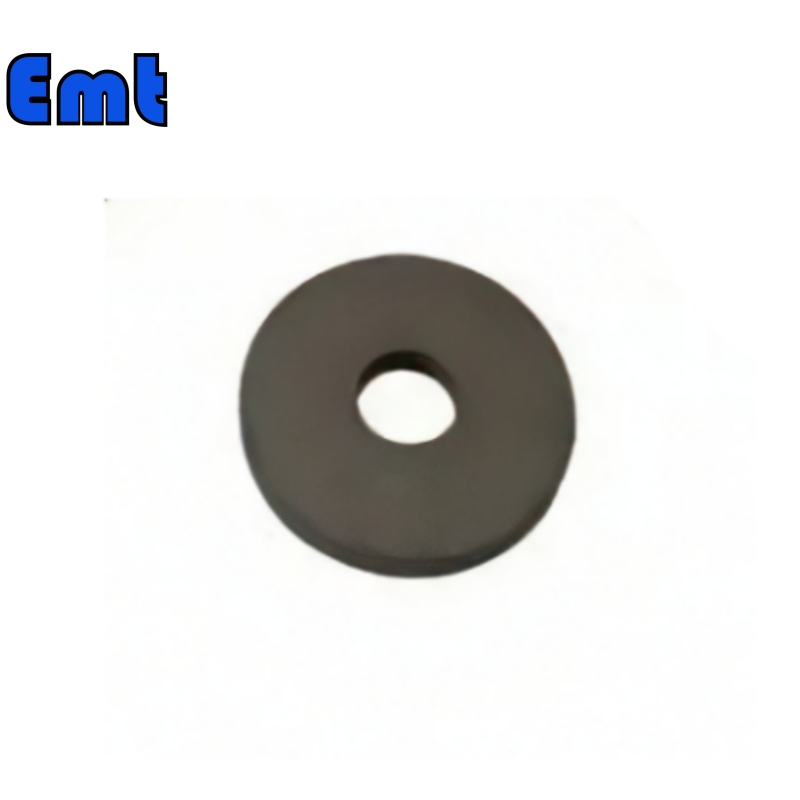
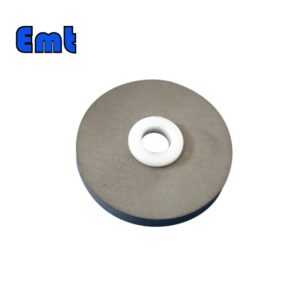
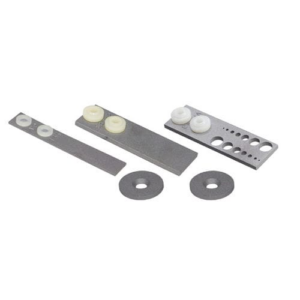

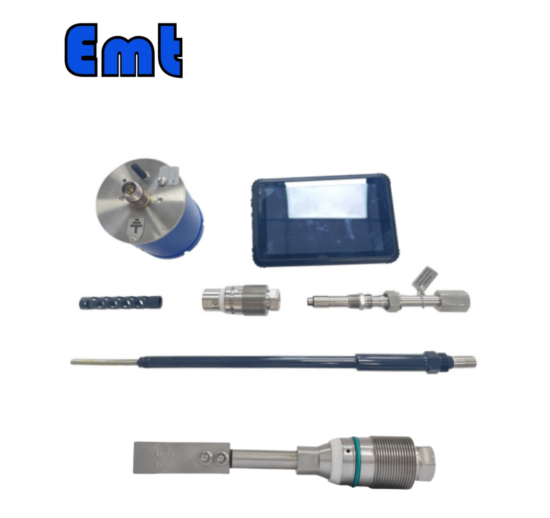
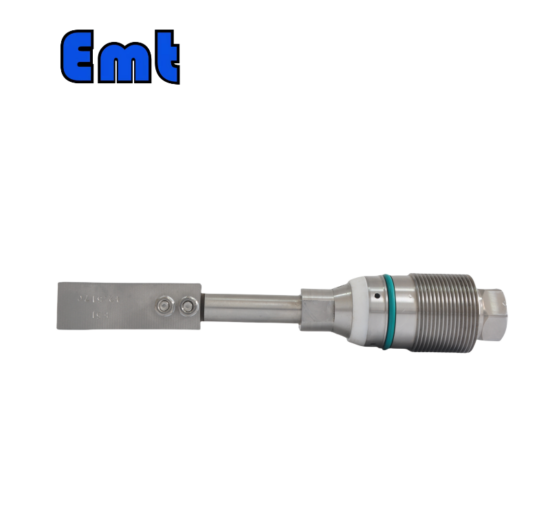
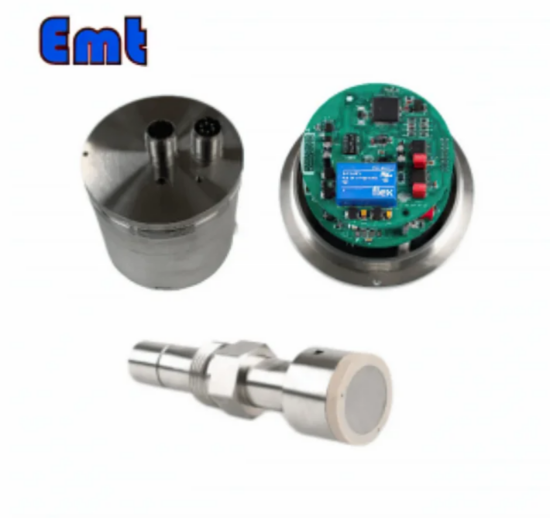
ą×čéąĘčŗą▓ąŠą▓ ą┐ąŠą║ą░ ąĮąĄčé.